Resurrection on Easter Island
|
Any pilgrimage to Easter Island, a.k.a. Rapa Nui, must begin at the Rano Raraku quarry where almost all the majestic moai (carvings) were made. Visitors can see nearly 400 of the island’s 887 moais in various stages of artistic endeavor on a healthy hike through Rano Raraku. Some moai look out towards the ocean, others are horizontal on the ground. I saw one moai tucked in the crevice of a volcanic cliff. Scattered across the quarry, the moai look like pins hit by the strike of a bowling ball. The human form moai were moved from the quarry to locations across the 64 square mile island. Other moai were never intended to leave the quarry. The moai are architectural wonders of power, wonder and mystery. We can see ourselves in them. We strive to stand tall. The Rapa Nui people sculpted the moai between the years of 1200 and 1500 A.D. The three-dimensional moai are set on stone platforms although in recent years archeologists have discovered bottoms. The large heads take up more than half of the statues, which average about 12 feet in height. The size of the statue denotes the amount of prestige, sort of a Donald Trump thing. The bold but welcoming faces represent ancestors. In recent years a couple of moai have had the whites restored to their sunken eyes. Moai were the focal point of ahu, ceremonial mortuary sites derived from the East Polynesian sacred place known as Marae, and their placement on land links them to families. Most of the figures were designed in the volcanic rock of Rano Raraku and then chipped away until the facial image remained. Easter Island was formed by three separate volcanic rock eruptions from the ocean floor somewhere between 100,000 and 1 million years ago. All volcanos on the island are extinct. Rano Raraku also contains a tree framed picnic area (and gift shop–they are everywhere) for visitors before they embark on a tour of the breathtaking quarry. On a clear day, sea birds, partridge and hawks fly around the grounds of the tiki gods. My late November visit to Easter Island was a trip of eternal summers with angels on my autumn wings. I will never forget this journey of spellbinding rebirth. Easter Island is the most remote island in the Pacific. (Antarctica is the most isolated place in the world and the surfers told me their best swells come from Antarctica.) The heritage name Rapa Nui was adapted in the mid-1800s, roughly translated as Rapa (island), Nui (large.) Easter Island was discovered by Dutch explorer Jacob Roggeven on Easter day, 1722. The island is a five and a half hour flight from Santiago, Chile. My expectation delivered me faster than that. Easter Island is 2,150 miles from the west coast of Santiago and 2,500 miles east of Tahiti. Where do you go to draw on spiritual energy? You rent a bicycle and ride around the island terrain. You soon learn how small you really are. The bigger moais weigh 90 tons. High season in Easter Island is from October to April. Tourism is the number one draw. Only 5,000 people live on Easter Island and tourism numbers have climbed to 100,000 annually. About 40 per cent of the residents are Rapa Nui, with the rest from mainland Chile and a smattering of British, French and German. I was surprised that huge LAN Boeing 787 Dreamliners fly into the tiny Easter Island airport twice a week. My stretch plane was filled with Chilean tourists. During my four days on Easter Island, I met a couple of Canadians, many Japanese tourists and lots of young visitors from Santiago. Easter Island is becoming their Key West. The in-town airstrip was built in 1996 which launched the Easter Island tourism industry. If I wasn’t schlepping so many souvenir moai back home, I could have walked from my hotel to the airport. Cargo and food are also shipped to the airport on the large planes out of the capital city of Santiago. The food on Easter Island was outstanding. More than 120 species of fish, especially mahi-mahi and tuna, are fresh out of the ocean. Beef and chicken are imported from the mainland. I had a memorable breakfast at Tupana, a breakfast and lunch pop-up in a trippy Volkswagen bus. The bus was parked along the bay, which is a popular departure point for surfers. The fresh strawberries, ample bananas and chocolate served atop a warm waffle got me though until mid-afternoons. Internet service can be spotty on the island and Tupana was the only establishment I saw with a hash tag. Sunset over the bay is a beautiful thing and can be experienced at the funky La Taverne Du Pecheur. Locals call the owner “The Angry Frenchman.” The two story restaurant features a small outdoor balcony overlooking the Hanga Roa bay. The Angry Frenchman insisted that anyone on the porch ordered dinner. It is not a place to hang out with a beer. So I ordered dinner. I enjoyed the ample serving of seafood ceviche appetizer, downed with a cold Escudo beer. The raw ceviche is Chile’s national dish. Some of my first hotel choices were sold out, so I picked the Iorana hotel through Hotels.com. Iorana means welcome in Rapa Nui, although the mood was a bit frosty. Riva Riva is Rapa Nui for “very well.” The Riva Riva was that the owner/front desk woman spoke fluent English and spent some time in Destin, Fla. The bad news is she pestered me on things I should have seen and things I should have done. But she never asked if I needed anything. I staggered into the Iorana after nearly 25 hours of transit (Chicago to Miami, Miami to Santiago, six hour layover in Santiago and to Easter Island.) As I was checking in the owner told me about a new radio station in Easter Island. This news brought me back to life. I heard zydeco-like music playing out from the station behind the front desk. Only a couple days later did a resident tell me it was the Iorana itself that opened that new station (100.5 FM). I did pick up a 2009 compilation of 19 hits from Radio Manukena (88.9 FM) CD. But the Iorana’s rooms were clean, the hotel has nice views of the ocean and hot water–which wasn’t the case with the accommodations of some other tourists I talked to. My friend at the hotel was right about seeing the quarry first, which I did not do. The bike ride was my initial idea but I did know how difficult it would be to bike from moai to moai even in short distances. I rented a bike from Oceanic Rapa Nui, which also rents cars. The terrain is choppy and rough for bicycle riding to the moai. The following day I ditched the bike and joined a half day group tour where I ran into two Chicagoans. The tour reminded me of the depressing confines of a junket, so on the third day I spent $150 for a private half day tour with Jorge’ Tepano of Tararaina Tours. It was money well spent. A Rapa Nui native, Tepano took me to the two must-see attractions: Rano Raraku and Ahu Tongariki. Ahu Tongariki is the island’s largest ceremonial display with 15 moai, all of which have been restored. It is where locals and tourists go for the spectacular sunrises. I finally made it to an island that Jimmy Buffett has yet to visit, although he told me he dreamed of playing a concert at Ahu Tongariki or a similar lineup of statues. “I have a friend there named Jo Anne Van Tilburg who is an archeologist,” Buffett told me in late summer 2015 on my WGN-AM radio show in Chicago. “Through her and making the (2006) movie ‘Hoot,’ my driver in ‘Hoot’ married a woman from Easter Island. Cheech was my Teamster driver. So my music went back over there. “I got word that the chief of the Rapa Nui tribe was a fan. Jo Anne said they wanted me to be a guest at their (annual February) cultural festival. They would let me sing amongst the statues. I was headed there to figure out if this was true when I fell off the stage in Australia (in January, 2011). I was going to fly there on my plane to check it out. I’ve never been able to do it, but I gotta get there.” Ahu Tongariki is the largest ceremonial structure in Polynesia. The University of Chile restored the moai between 1992 and 1996. The $2 million restoration project was funded by the Japanese government. * * * * After several phone calls and e-mails I discovered Dr. Jo Anne Van Tilburg, not on Easter Island, but at the UCLA Rock Art Archive in Los Angeles. Rock art is the process of carving or painting on stone. Rock art is another part of the mysterious puzzle on Easter Island. Van Tilburg is director of the Rock Art Archive. She is also director of the Easter Island Statue Project, which maps, excavates and archives Easter Island statues. Later this year UCLA will publish her atlas of Easter Island statues. Van Tilburg, her husband and family are Buffett fans. “I love the way the man can turn a phrase,” she said in an engaging conversation from Malibu. “He’s a really fine writer. We live in Malibu and have a place in Aspen (Colo.) I have a Jimmy Buffett poster in my kitchen signed by all the guys in Aspen that were off the wall in those days like Hunter Thompson. I actually met Jimmy through a mutual friend, a woman he knew in Tahiti. We had dinner and we hit it off. And he’s always said he wanted to go to Easter Island. “It was something he didn’t want to lose.” Van Tilburg sent Buffett native music and photographs in preparation for his 2011 visit. “When he fell off the stage he was two days landing on Rapa Nui,” she said. “I was there to meet him with the best flowers and prettiest girls I could find. We kept it as low key as possible. There was no performance scheduled. He wanted to do something for the islanders. I told him of his choices of places to stay, one place that is $1,000 a day in the middle of nowhere and run by Chileans–it is fabulous–and another place that is $300 a day, in the heart of the village and run by Rapa Nui people–he chose the latter. He really wanted to be part of the community.” Stay tuned for further developments. Nothing is set in stone. In 2003 Van Tilburg wrote “Among Stone Giants: The Life of Katherine Routledge and Her Remarkable Expedition to Easter Island” (Scribner, $27). Routledge died in 1935, institutionalized from schizophrenia. She was one of the first female graduates of Oxford University and between 1913 and 1915 conducted the first ever excavations of the island’s statues. She also interviewed the islanders, gathering information about Rapa Nui customs and rites. “She and I are one,” Van Tilburg said. “She worked on Easter Island with (native) Juan Tepano and Juan Tepano is the great grandfather of the man with whom I work. It felt like something that was meant to be. Routledge used lit candles at her desk to keep herself focused. I found if she could stay on track with the problems she was dealing with, I felt it the best way to honor her work would be for me to stay on track as well. It’s very hard sometimes to be a woman as an archeologist and hard to be involved in other projects I am. If I’m gone too long I lose my north. She helped me understand you have to stay focused in order to make a contribution.” A very long time ago oral folklore was handed down at evening family gatherings on Easter Island. The late Uka Tepano kept 75 notebooks of the stories from her father, who was the son of Juan Tepano. Uka Tepano died in 2004 and she left behind the island’s most extensive written work in native language. The pages are as yellow as the Polynesian sun and just as precious. Van Tilburg also leads yearly tours with the New York-based Archaeological Tours. She conducts the tours because she is interested in what motivates people to make the effort in time and money to get to Easter Island. “What moves them to want to visit this place, other than just another place to check off on a list–which a lot of people do,” she explained. “The people with Archaeological Tours are well read. We always start at the quarry. The (moai) artists were creating something that would speak to everybody equally. They represent an ideal. The statues we are excavating are set in actual holes carved in bedrock up to a meter deep. There is not a lot of leeway to move it. You have made a decision the statue was going to be there a long time.” “The other important thing is that the statues on the ceremonial sites are smaller than the statues remaining along roads leading to those sites. So the debate has always been about the statues lying dispersed from the quarry: ‘What are they doing there?’ ‘Were they moving along roads?’ ‘Were they standing in place for some reason?’ Some in fact were meant to be standing in place between the quarry and the ahu. But we don’t know how they got there, how they erected them or why they did that. I think they moved them in primarily a horizontal position. They didn’t walk them, I can tell you that. I think they used rollers, ropes and sleds. I also think they moved them in rafts along the coastline.” My tour guide Tepano explained, “The first archaeological restoration was in 1956 at Anakena by Thor Heyerdahl. It was with the Rapa Nui group of people where they used stone, logs and rope.” Heyerdahl, who died in 2002 at the age of 87 was the Norwegian anthropologist who wrote the landmark book “Kon-Tiki” about his 1947 voyage to the Polynesian islands on a balsa log raft launched from Peru. Locals affectionately call Heyerdahl “Mr. Kon Tiki.” In 1958 Heyerdahl wrote “Aku-Aku” about his effort in raising the statue Ahu Ature Huke at Anakena. Heyerdahl and his expedition team camped at Anakena in the mid-1950s and again in 1986. The archaeological site is the only sand beach on Easter Island. Today, approximately 40 per cent of Easter Island is protected as a national park and you can buy park tickets as you enter the airport. It also took me a few days to discover the novelty passport stamp of moai statues you can get for free at the Napa Rui post office near the center of the village. Passports are stamped in Santiago, but the Easter Island addition is regarded as one of the top stamps in the world, along with Greenland and tiny San Marino, Italy, the oldest constitutional republic in the world. In March, 1996 UNESCO designated Easter Island a World Heritage Site. Van Tilburg first visited the island in 1982. She now returns four times a year when she is excavating. She still lives in a world of mystical discovery. Just last year her group unearthed an upright carved stone head in Rano Raraku. “From a dreamland standpoint I went there because of Thor Heyerdahl,” she reflected. “As a child (in St. Paul, Mn.) I had read his material in National Geographic and had given reports about it in my grade school class. “From a practical point of view I was invited by the University of California Berkeley to record rock art. I had been doing that at UCLA since 1979. I wanted to go to Easter Island for a long time and then, there it was.” Van Tilburg has witnessed dramatic change since her first trip to the island 34 years ago. “Like all developing areas of the world they have been flung into the digital age in a way that was unexpected,” she said. “Economically their lives are immeasurably better than they were. From a socio-political point of view they are extremely tense because their economic situation, which is very good, has put them in a position where they wish to have more autonomy from Chile.” The visitors are changing too–with people like me!! “In 1982 it was a real trek to get there,” she said. “In those days you could sit in Santiago for a week or two weeks before they got a plane to go to the island that was half way full. But the people that came were on a quest.. “They were inspired. They knew a lot about the island at the time there wasn’t much to know. What’s ironic is now that there’s so much to know through the internet and published material, people know less than they did then. They pay less attention. The whole digital revolution has changed our attention spans and the way we are hard-wired mentally. The idea of being there and rushing to see everything is pretty much the state of the situation right now.” Tepano was born in 1972. His parents were fishermen and farmers. “Many things have changed since I was born,” he said. “More resources have come to the island. More flights. More garbage. Until the 1990s there were not many cars here. Most of the people used horses. Some ate horses. There was not much money. Not many choices. Now we have big planes from China. We have a charter from the United States. Normally people stay here for a couple of days.” I even saw a cruise ship docked outside of Easter Island and recruited a passenger from Hamburg, Germany to take my picture at the Tahai moai near the center of town. Tepano said that was one of two cruise ships that were visiting the island in high season. Tahai is the only moai on the island with a replica set of beady white eyes. Original eyes were made of white coral. “Almost 600 moai eyes were destroyed during the civil war time,” Tepano said. “Why the eyes? Because they can see the spirit with their eyes. The spirits belonged to their tribes. The eyes projected the spirit of the tribe. The moai never belonged to the architect. They always belonged to the tribe.” Tepano has been a tour guide since 1997. Why are people so fascinated with the moai? “It is the mystery,” he answered. “The fable of the statues walking side by side. Why did aliens come to help them bury the moai? Of course that is not the real history. It is a very small island but contains so much history.” Van Tilburg added, “The exciting thing is that it is not over until it is over. There is still a lot more to know.” |

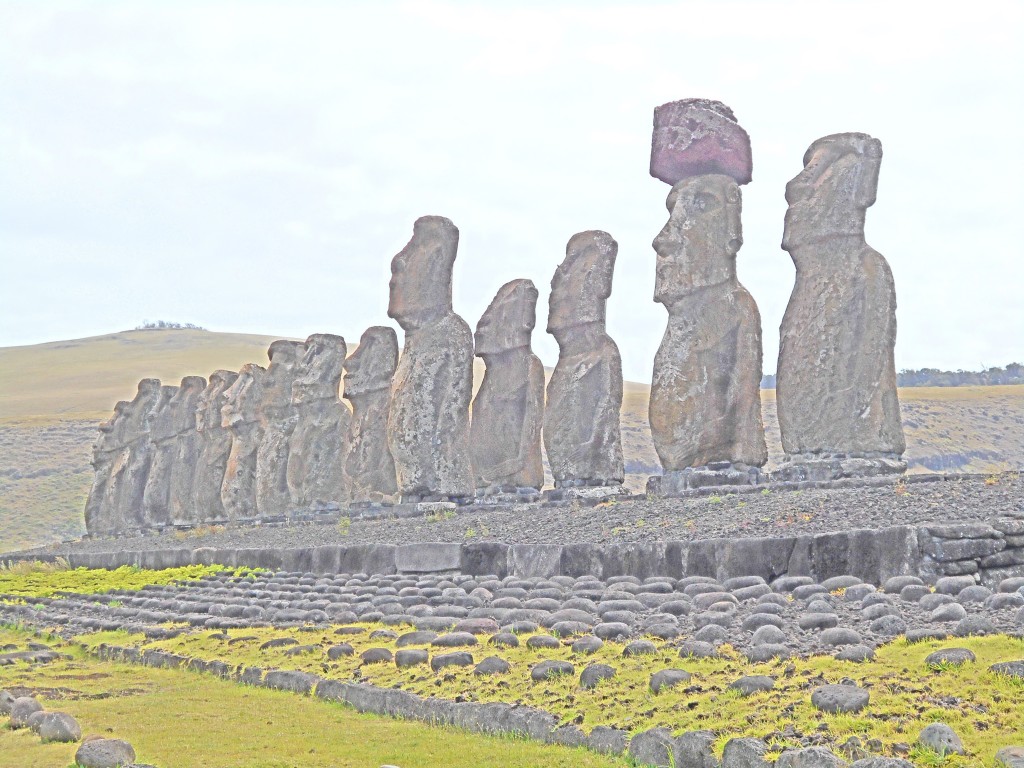
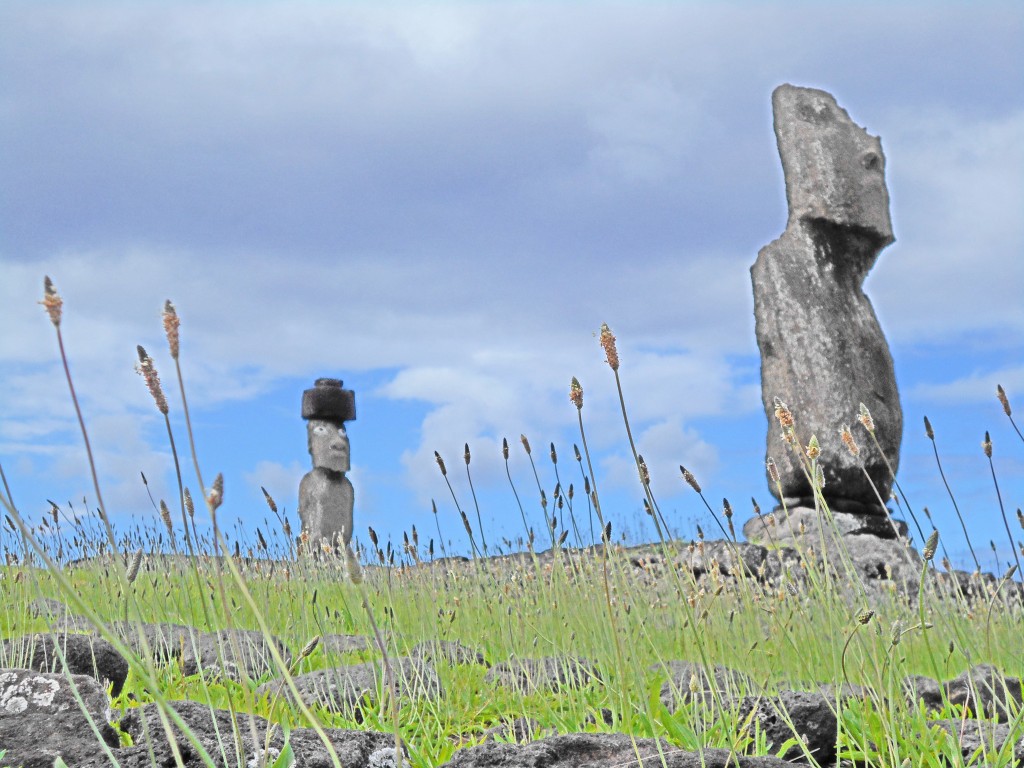
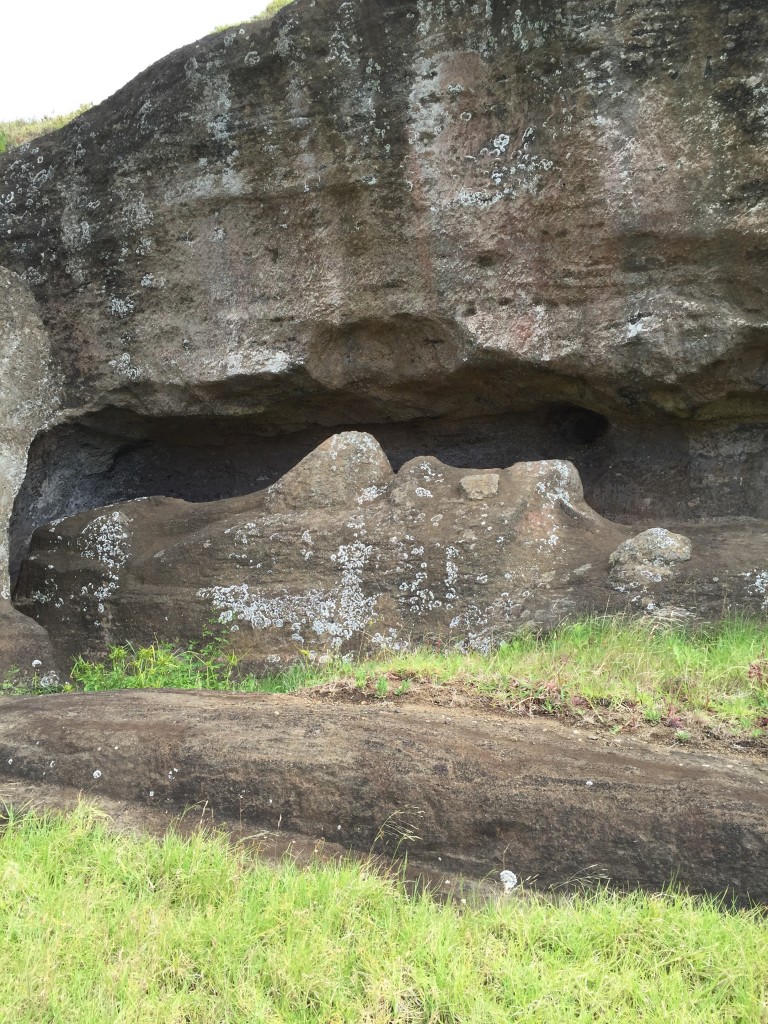
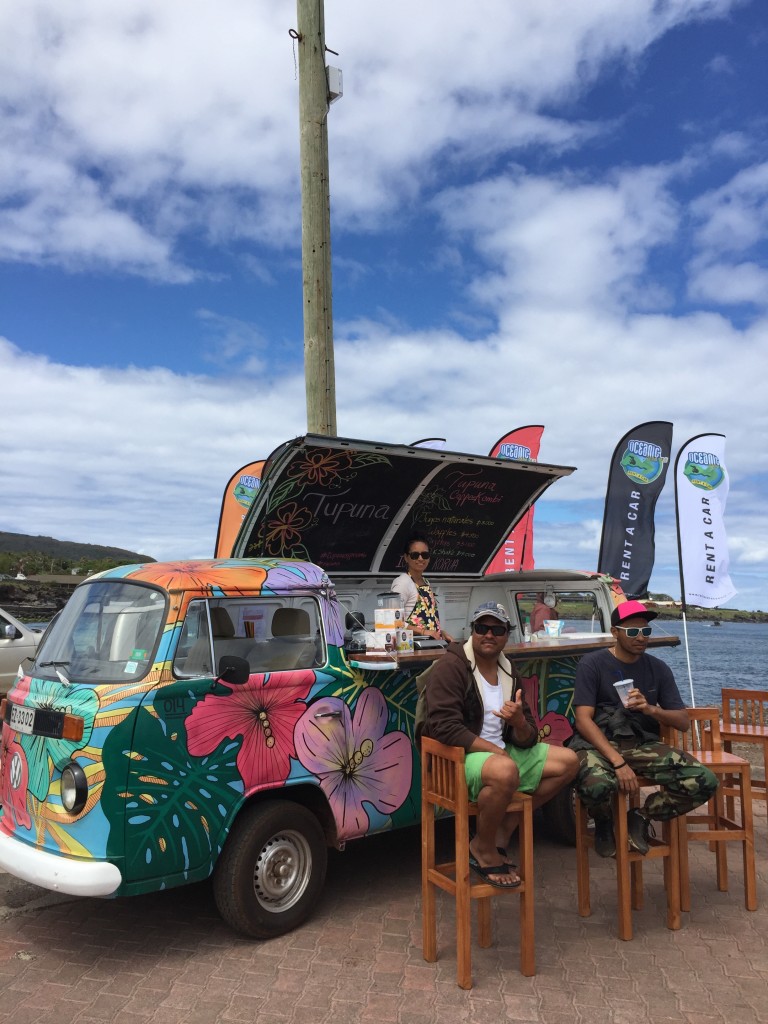
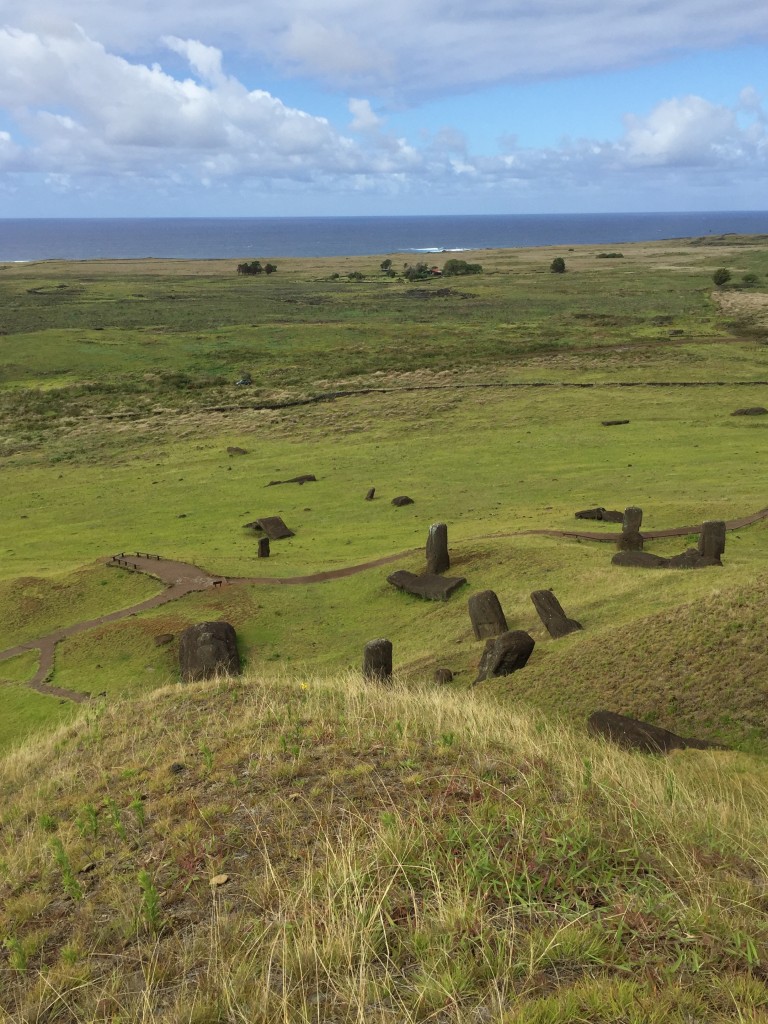
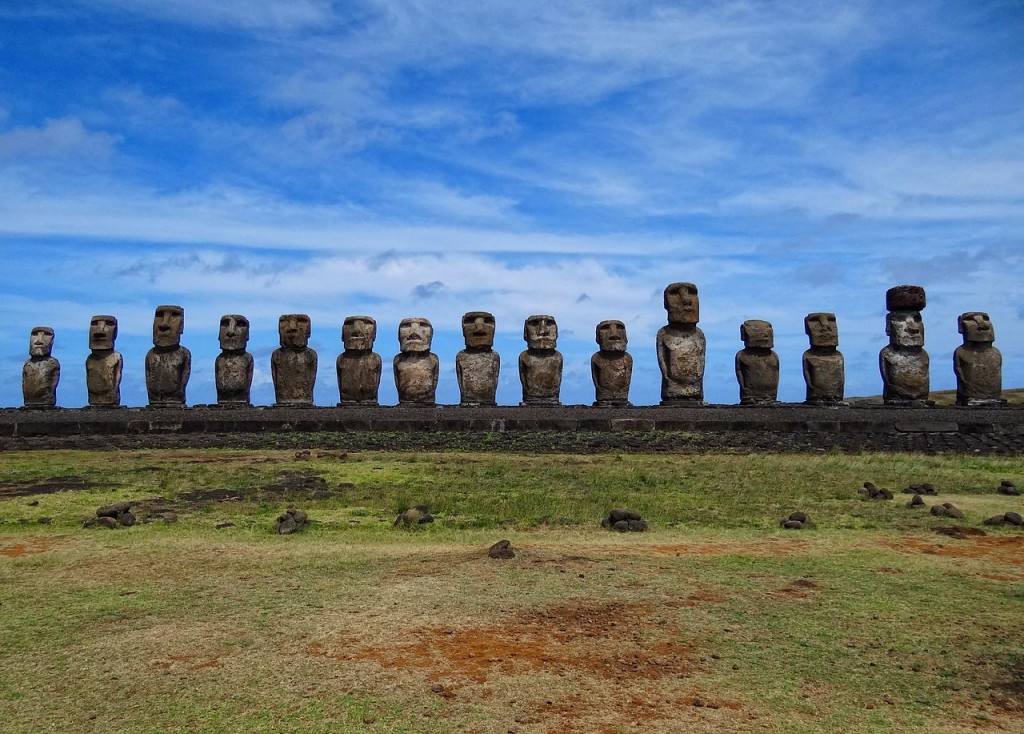
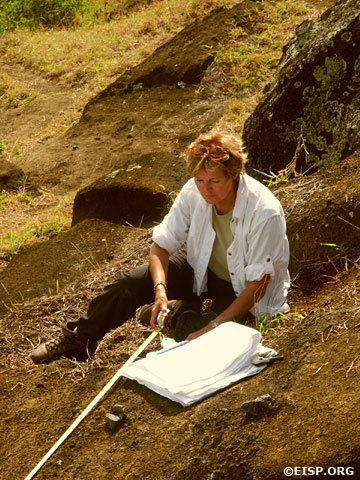
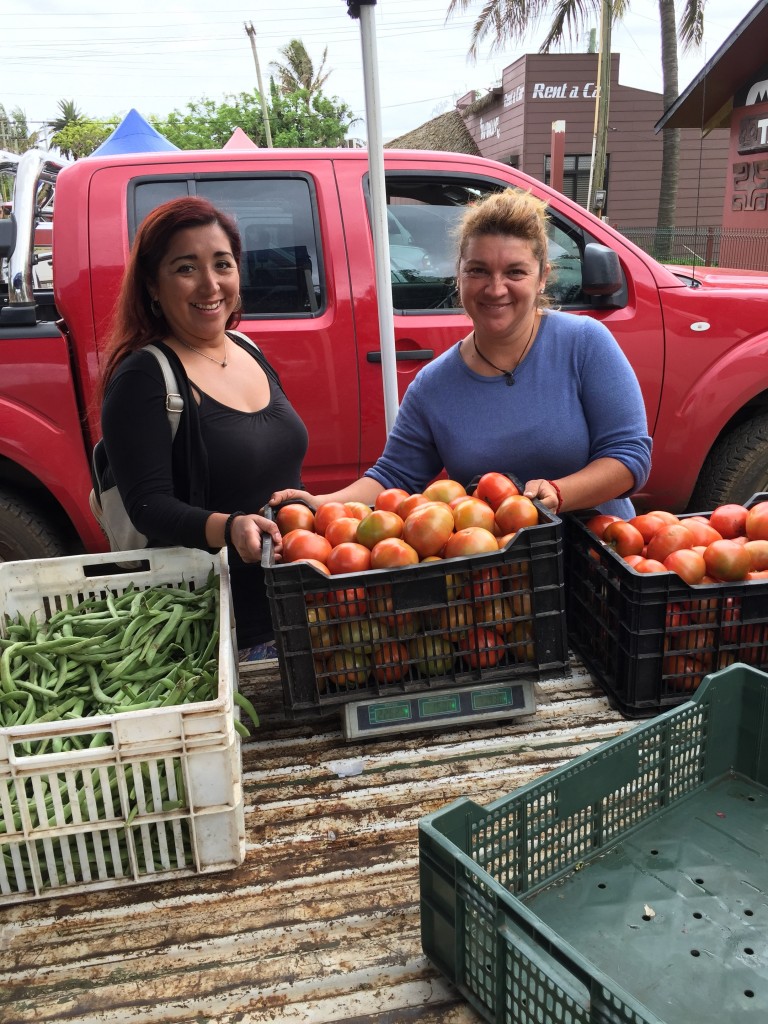
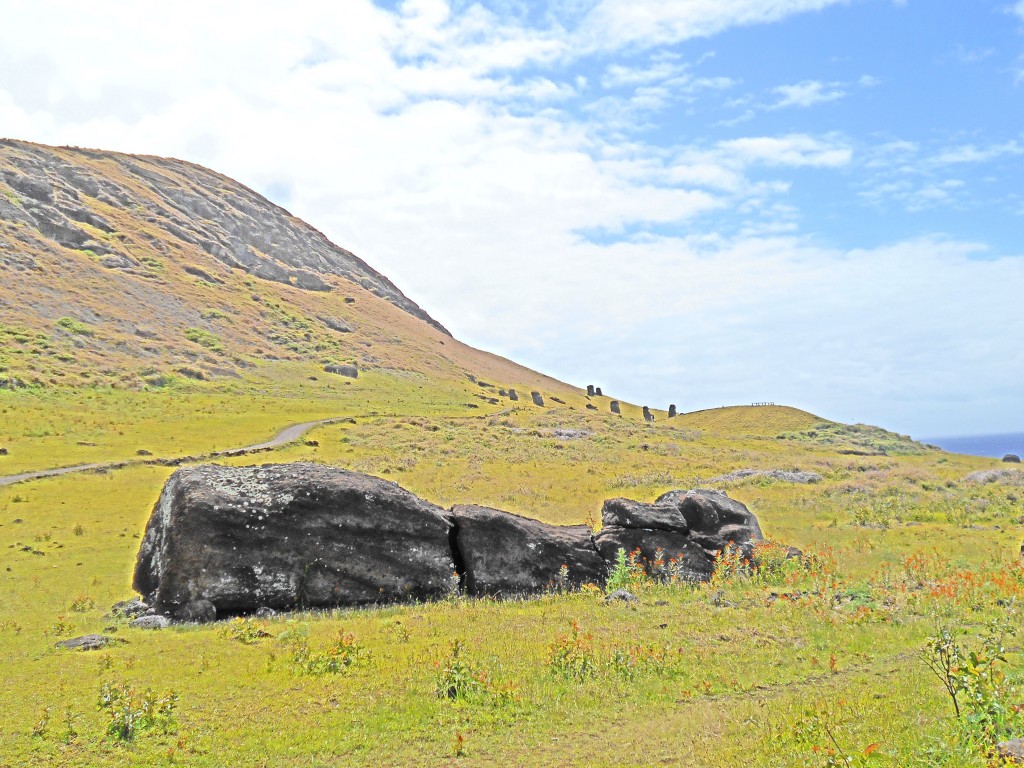
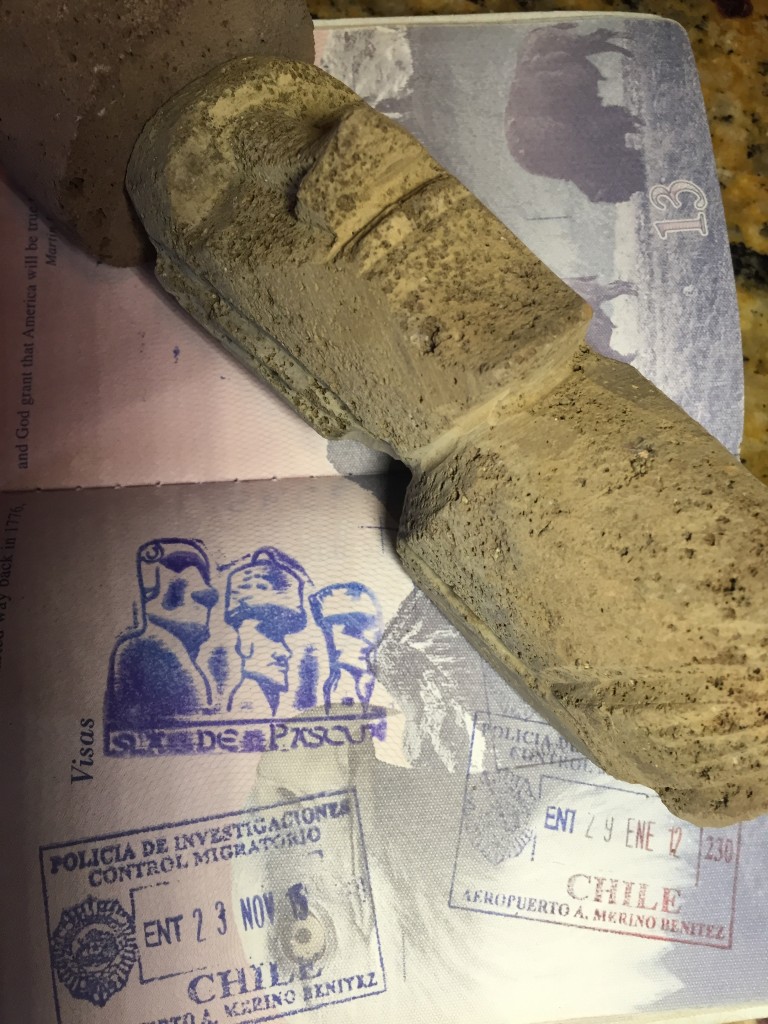
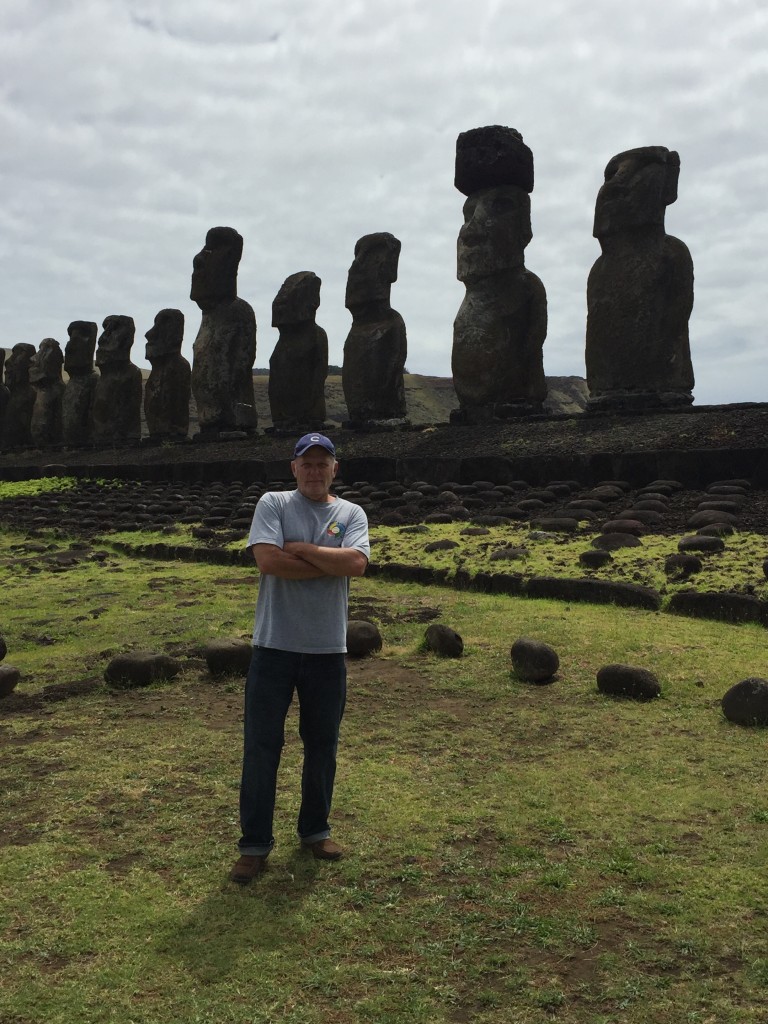
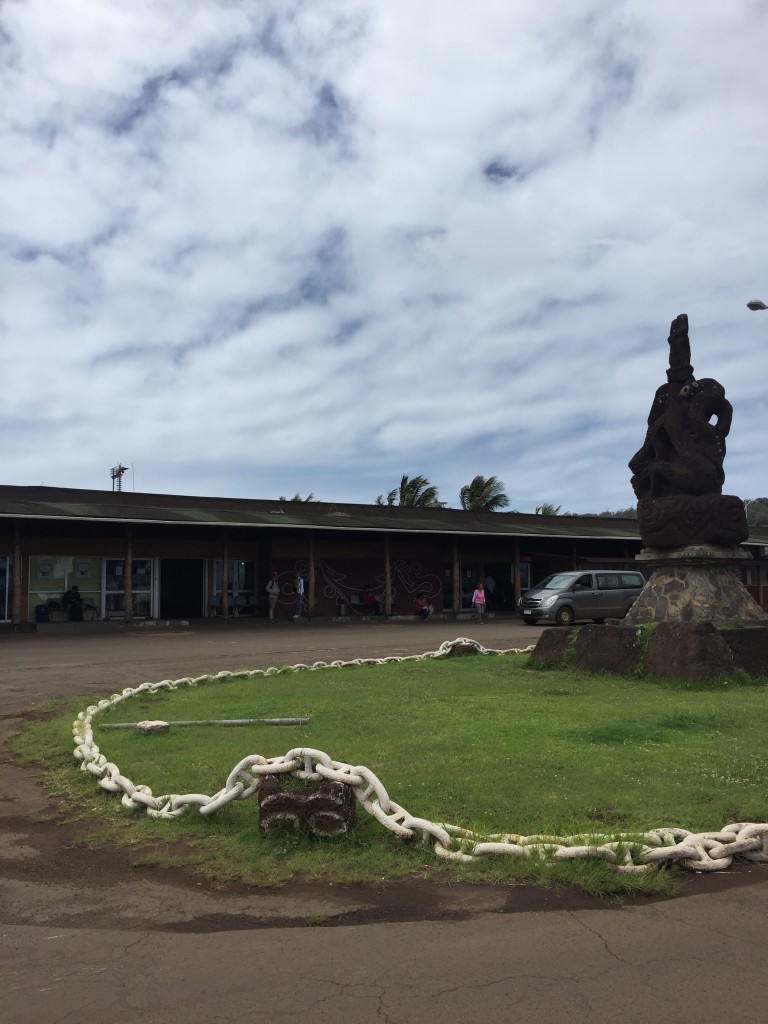

Leave a Response